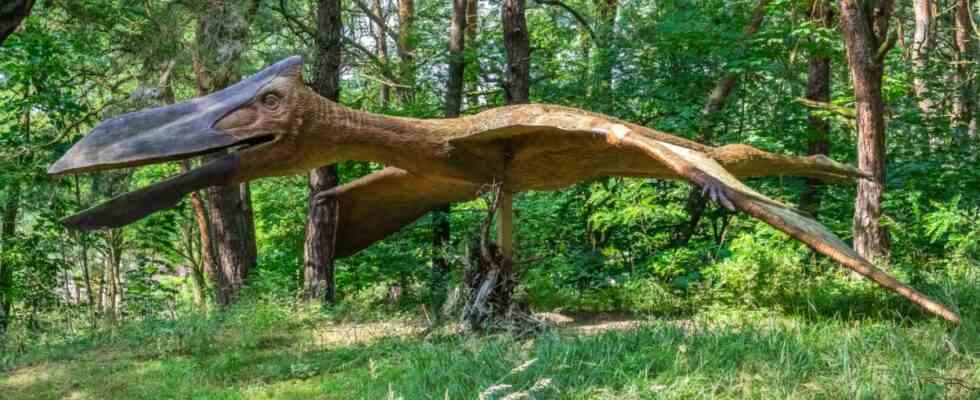A warning light comes on in the cockpit, a scream and he’s there. A giant pterosaur falls from the sky, attacks the heroes’ plane, shreds its turbines with its meter-long beak, and takes off again. Universal Pictures uses this scene to promote the sixth part of the Jurassic Park film series. And even this foretaste makes it clear: the rulers of the air are gigantic flying lizards in the film.
“Jurassic World: A New Age” will be in German cinemas in June. There are scientific blurs in all the films in the series; for example, most dinosaurs were probably not green-brown scaly beings as depicted, but feathered and brightly colored. But especially at this scene, some scientists from Japan and France are now likely to frown. You have studied the aerodynamics of various primeval giants and conclude in the journal PNAS Nexus: Ironically, this pterosaur would probably never have controlled any airspace. He could only fly badly. He spent most of his time on the floor.
The pterosaur shown is a Quetzalcoatlus; the genus is named after a Mesoamerican god often depicted as a feathered serpent. With a wingspan of more than ten meters, Quetzalcoatlus is the largest known pterosaur and lived in the Upper Cretaceous, so it was a contemporary of Tyrannosaurus and Triceratops. And like them, it died out 66 million years ago after an asteroid impact.
Apparently, the animal jumped in the air on all fours to take off
The flight of Quetzalcoatlus has long puzzled researchers. How did this giant lizard, the According to recent estimates, around 250 kilograms weighed to fly? Even the start seems difficult: The standing Quetzalcoatlus resembles a giraffe; because of its relatively short legs, its torso was probably too close to the ground for the animal to flap its wings effectively. So did he jump off a cliff to take off, or ran down a slope like a paraglider? Recently, the view has prevailed that the Quetzalcoatlus jumped in the air on all fours to take off. But once he was up, how did he stay up? Was he flapping like a bat? Given its size, researchers judged years ago, that would have been disproportionately exhausting. They assumed that the animals glided and sailed through the air and used thermals like a modern-day eagle or vulture.
But even that was obviously not the case with Quetzalcoatlus. Scientists led by Yusuke Goto from the French research center CNRS have calculated how well modern and extinct birds and the pterodactyls Pteranodon and Quetzalcoatlus were able to use thermals to soar into the air. All of the extinct animals studied were therefore fairly good gliders. But Quetzalcoatlus fell out of line. While everyone else, according to the calculations, climbed effortlessly in thermal updrafts, the giant spiraled downwards.
The Quetzalcoatlus was just too heavy. There was too much weight on its wings and it was descending too quickly in glide to use thermals to climb. Until now, it was thought that the flying lizard could have flown ten thousand miles without touching the ground, the researchers explain. In fact, its flight characteristics were even worse than today’s giant bustards – these are African birds weighing up to almost 20 kilograms, which mainly live on land and only fly in emergencies to escape hunters. The scientists imagine the behavior of Quetzalcoatlus to be similar. He therefore mostly walked over the earth, on legs and winged arms. To hunt or flee, he could flap through the air for short distances. His weight didn’t allow for more.

